We have 13 pitchers in today's group of 20 prospects, ranging from guys ready to take on big league rotation spots to pitchers just drafted or, in one case, just signed out of Cuba.
This collection includes the lowest-drafted player from 2016 to make this list, a guy taken after the first round who made a very strong impression on pro scouts who saw him after he signed -- and asked how he got that far.
Editor's note: Age is the player's age as of July 1, 2017.
Top 100 prospects ranked 1-20 | 21-40 | 41-60 | 61-80 | 81-100 | Index
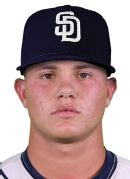 80. Adrian Morejon, LHP, San Diego Padres
80. Adrian Morejon, LHP, San Diego Padres
Age: 18 (2/27/99) | B/T: L/L
Height: 6-0 | Weight: 165
Top level: Cuba | 2016: NE
 The Padres signed Morejon, a 17-year-old Cuban lefty, for an $11 million bonus last July 2, which cost the team an additional $11 million for exceeding their international bonus cap, but they felt the young and not-very-tall southpaw was well worth it.
The Padres signed Morejon, a 17-year-old Cuban lefty, for an $11 million bonus last July 2, which cost the team an additional $11 million for exceeding their international bonus cap, but they felt the young and not-very-tall southpaw was well worth it.
Morejon is barely 6 feet tall, but he is strong, with a durable, wide frame, and he throws 93-97 mph right now with good angle to the fastball and a four-pitch mix led by a hard knuckle-change clocked in the mid-80s. He showed that he can really pitch to both sides with his fastball in instructional league, though to be fair, no player in history has ever looked bad in instructs.
Morejon hasn’t pitched competitively since he was a 16-year-old in Cuba in 2014, so you can truly dream on him -- there’s no objective data to hold you back. The scouting reports on him are so glowing that he could be the next Anderson Espinoza, which would shoot him up this list next January, if he lives up to them.
 79. Luis Ortiz, RHP, Milwaukee Brewers
79. Luis Ortiz, RHP, Milwaukee Brewers
Age: 21 (9/22/95) | B/T: R/R
Height: 6-3 | Weight: 230
Top level: Double-A | 2016: 79
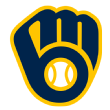 Ortiz was part of the package going to Milwaukee for Jonathan Lucroy and Jeremy Jeffress. Although Lewis Brinson seems closer to the majors and has superstar upside, Ortiz might produce big league value sooner because he’s so much more advanced.
Ortiz was part of the package going to Milwaukee for Jonathan Lucroy and Jeremy Jeffress. Although Lewis Brinson seems closer to the majors and has superstar upside, Ortiz might produce big league value sooner because he’s so much more advanced.
Ortiz’s fastball velocity will sit in the low to mid-90s, which he complements with a plus changeup. Although his breaking ball is fringe-average, his command is major-league-caliber already, and his control is above average, with just 23 walks in 90 ⅔ innings (5.9 percent) across three teams and two levels in 2016.
Ortiz has to watch his weight, as he’s heavy trending toward … uh … festively plump, and the 90 ⅔ innings represented a career high for him, so he has yet to prove any durability. He’ll probably start the year at Double-A, maybe spending the season there rather than going to Colorado Springs. The lack of a true breaking pitch limits his ceiling, but I see a very good No. 3 starter here and maybe a No. 2 because the command might end up better than plus.
 78. Forrest Whitley, RHP, Houston Astros
78. Forrest Whitley, RHP, Houston Astros
Age: 19 (9/15/97) | B/T: R/R
Height: 6-7 | Weight: 240
Top level: Rookie | 2016: NE
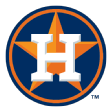 The Astros went semi-local with their first-round pick in 2016. They took San Antonio high school right-hander Whitley with the 17th overall selection in the June draft, betting on his combination of size, present stuff and relative polish. Whitley has been clocked throwing up to 97 mph, his fastball sat at 89-95 once he entered the Astros’ system, and he already works with four pitches, including a hard power curveball that’s at least a 55 right now.
The Astros went semi-local with their first-round pick in 2016. They took San Antonio high school right-hander Whitley with the 17th overall selection in the June draft, betting on his combination of size, present stuff and relative polish. Whitley has been clocked throwing up to 97 mph, his fastball sat at 89-95 once he entered the Astros’ system, and he already works with four pitches, including a hard power curveball that’s at least a 55 right now.
He’s ginormous -- sorry to use the technical scouting term there -- at 6-foot-7 and 240 pounds, but unlike a lot of kids his height, he is pretty coordinated and can repeat his delivery already. He’s atypical of high school pitching drafts -- there’s nothing substantial that has to change or develop here, other than the sort of adjustments every player has to make when facing better competition at each level. He’s built like a horse, and without any changes in his present stuff, you could project him as a potential No. 2 or, most likely, a good No. 3, giving better than average performances with the capacity to handle 200 innings.
 77. Luiz Gohara, LHP, Atlanta Braves
77. Luiz Gohara, LHP, Atlanta Braves
Age: 20 (7/31/96) | B/T: L/L
Height: 6-3 | Weight: 210
Top level: Low-A | 2016: NR
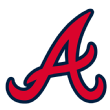 Signed by the Mariners on his 16th birthday in 2012, the Brazilian Gohara went from throwing 86-90 mph at that age to 94-98 now, but he always complemented with a hard curveball that should at least be death to left-handed batters. He built up his body from a skinny teenager to a CC Sabathia lookalike. Gohara has some effort in his delivery, more than he did when he first signed, which is why his command is still somewhat shaky, even though his walk totals were reasonable in 2016 (8.8 percent of batters faced in low-A). His changeup is still rudimentary, but he has yet to reach a level where that’s a problem for him.
Signed by the Mariners on his 16th birthday in 2012, the Brazilian Gohara went from throwing 86-90 mph at that age to 94-98 now, but he always complemented with a hard curveball that should at least be death to left-handed batters. He built up his body from a skinny teenager to a CC Sabathia lookalike. Gohara has some effort in his delivery, more than he did when he first signed, which is why his command is still somewhat shaky, even though his walk totals were reasonable in 2016 (8.8 percent of batters faced in low-A). His changeup is still rudimentary, but he has yet to reach a level where that’s a problem for him.
Gohara might be a top-50 prospect if he didn’t have a few significant flaws -- and he might be a Red, as a potential deal to Cincinnati for Zack Cozart was scotched because the Reds thought something was amiss with Gohara’s shoulder. He has also had conditioning questions and has a reputation for liking the off-field life a little too much, neither of which is ideal in a 20-year-old with real developmental challenges ahead of him. But Atlanta is in a position to bet on the long-term potential of a lefty with this kind of stuff. Gohara could be a No. 2 starter, and he could be a terrific one-inning option out of the pen, with about equal odds that he’s a starter or reliever.
 76. Robert Gsellman, RHP, New York Mets
76. Robert Gsellman, RHP, New York Mets
Age: 23 (7/18/93) | B/T: R/R
Height: 6-4 | Weight: 205
Top level: MLB | 2016: NR
 Gsellman was a crafty, command right-hander until mid-2016, when his velocity started to climb rapidly, so that when he reached the majors in August, he was pitching at 92-96 mph. Gsellman is a sinkerballer by trade, complemented with the slightly above average curveball he uses as a put-away pitch as well as an average changeup -- and, of course, if Dan Warthen has laid hands on a guy, he probably has a decent slider too.
Gsellman was a crafty, command right-hander until mid-2016, when his velocity started to climb rapidly, so that when he reached the majors in August, he was pitching at 92-96 mph. Gsellman is a sinkerballer by trade, complemented with the slightly above average curveball he uses as a put-away pitch as well as an average changeup -- and, of course, if Dan Warthen has laid hands on a guy, he probably has a decent slider too.
That’s four pitches, nothing truly plus, but with his command he was always going to be at least a solid No. 5 starter. With this stuff now, he’s a No. 4 trending up to a No. 3, and I’d be very surprised if he gave the Mets anything less than three years as a solid-average big league starting pitcher.
 75. Yohander Mendez, LHP, Texas Rangers
75. Yohander Mendez, LHP, Texas Rangers
Age: 22 (1/17/95) | B/T: L/L
Height: 6-5 | Weight: 200
Top level: MLB | 2016: NR
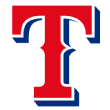 Mendez came into 2016 having never thrown more than 66 innings in a regular season in his career and nothing at all above low-A. He ended up throwing 111 innings across three levels and getting a September call-up to the big leagues.
Mendez came into 2016 having never thrown more than 66 innings in a regular season in his career and nothing at all above low-A. He ended up throwing 111 innings across three levels and getting a September call-up to the big leagues.
Mendez is a big lefty, at 6-foot-5 and listed at 200 pounds, though he has put on some good weight since then. Where he was previously a feel-and-command guy, he’s now working with an above-average fastball and changeup, as well as two breaking balls, neither of which is quite up to par with the first two pitches. He gets good glove-side run on the fastball, but not sink, and does like to pitch up with it to try for swing-and-misses or to jam right-handed hitters for popups.
Despite his lack of innings, he’s probably ready for the Rangers’ Triple-A rotation at this point, and he could see some more major-league action in 2017, though leaving him in the minors to work on his breaking stuff, perhaps choosing one pitch to focus on, is probably the best way for him to develop. There’s upside as a good No. 3 starter here, and given Mendez's feel to pitch, I think only health will keep him out of a major-league rotation.
 74. Ke’Bryan Hayes, 3B, Pittsburgh Pirates
74. Ke’Bryan Hayes, 3B, Pittsburgh Pirates
Age: 20 (1/28/97) | B/T: R/R
Height: 6-1 | Weight: 210
Top level: Low-A | 2016: JM
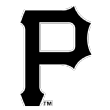 The son of former Yankee and Phillie Charlie Hayes, Ke’Bryan Hayes was the Pirates’ second pick in 2015 after Kevin Newman, and he got off to a roaring start in 2016 before a nagging rib injury sapped his performance and eventually ended his season in early July.
The son of former Yankee and Phillie Charlie Hayes, Ke’Bryan Hayes was the Pirates’ second pick in 2015 after Kevin Newman, and he got off to a roaring start in 2016 before a nagging rib injury sapped his performance and eventually ended his season in early July.
Hayes is an elite defensive third baseman right now. He is among the best at the position in the minors, bearing in mind that some current shortstops will end up at third, and he has great feel to hit already, with high contact rates since he entered pro ball. The knock on him in high school was his lack of present or projectable power. I believe that if a player can hit, has some loft in his finish and has room to grow physically, you can comfortably project another grade of power in the future, and Hayes fits those criteria.
I will concede right now that I was wrong on Matt Dominguez as a prospect. I thought Dominguez would be a 70 or 80 defender and that the glove and his power would make up for low OBPs, but the guy never could recognize a changeup, and a .273 OBP is just unforgivable. Hayes isn’t Dominguez. He might not be quite the defender, but he’s a far better hitter at age 19 than Dominguez ever became, so I think rating Hayes high recognizes their differences rather than repeating the mistake. Hayes is going to post OBPs that are at least in the mid-.300s, maybe with 35 doubles and 10-12 homers, though the Pirates hope for a little more than that.
 73. Jose De Leon, RHP, Tampa Bay Rays
73. Jose De Leon, RHP, Tampa Bay Rays
Age: 24 (8/7/92) | B/T: R/R
Height: 6-2 | Weight: 190
Top level: MLB | 2016: 60
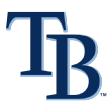 Born in Puerto Rico but drafted in the 24th round out of Southern University, De Leon raced through the minors in just over three years to reach the majors, where he had a bit of a rough welcome from big league hitters, who squared up his fastball. He was acquired by the Rays in a trade with the Dodgers on Monday night.
Born in Puerto Rico but drafted in the 24th round out of Southern University, De Leon raced through the minors in just over three years to reach the majors, where he had a bit of a rough welcome from big league hitters, who squared up his fastball. He was acquired by the Rays in a trade with the Dodgers on Monday night.
De Leon pitches 89-94 mph with his four-seamer but relies on deception to keep hitters off the pitch. He boosts his fastball with an above-average changeup that he needs to use more frequently the next time he’s in the majors and an in-between slurve that probably needs to be resolved in favor of a true slider. De Leon generated just nine swing-and-misses on the changeup, his best pitch, out of 302 total pitches in the majors, which tells you something about his raw stuff.
In the minors, he dominated at every level, including Triple-A, where he struck out 32 percent of opposing batters, guys who couldn’t handle the deception in his delivery and the way he changes speeds. I think he’s a solid fourth starter, maybe right now, but he won’t match his minor league numbers unless one or more of his weapons becomes a true out pitch.
 72. Sean Reid-Foley, RHP, Toronto Blue Jays
72. Sean Reid-Foley, RHP, Toronto Blue Jays
Age: 21 (8/30/95) | B/T: R/R
Height: 6-3 | Weight: 220
Top level: High-A | 2016: NR
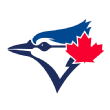 Reid-Foley was Toronto’s second-round pick in 2014 out of a Jacksonville high school. He split 2015 between low- and high-A but struggled to throw strikes at both levels. He was a different animal in 2016, starting back at low-A and smoothing out his delivery (which he couldn’t repeat well in high school). He’s now pitching with a mid-90s fastball with plus life and a plus curveball that helped him strike out nearly a third of the batters he faced in the Florida State League after a promotion back to high-A.
Reid-Foley was Toronto’s second-round pick in 2014 out of a Jacksonville high school. He split 2015 between low- and high-A but struggled to throw strikes at both levels. He was a different animal in 2016, starting back at low-A and smoothing out his delivery (which he couldn’t repeat well in high school). He’s now pitching with a mid-90s fastball with plus life and a plus curveball that helped him strike out nearly a third of the batters he faced in the Florida State League after a promotion back to high-A.
Getting a more consistent delivery allowed Reid-Foley to throw strikes, as he cut his walk rate by about half last year, and develop some fastball command. His changeup still lags behind his other two pitches, and he’ll need something to get lefties out in Double-A this year, but there’s No. 2 starter potential here, given his present stuff and command.
 71. Josh Hader, LHP, Milwaukee Brewers
71. Josh Hader, LHP, Milwaukee Brewers
Age: 23 (4/7/94) | B/T: L/L
Height: 6-3 | Weight: 185
Top level: Triple-A | 2016: NR
 Hader’s gonna hade? That might be a stretch, but given how far Hader has come as a prospect since the Orioles took him as an unknown local kid in the 19th round in 2012, he has more than earned some sort of slogan.
Hader’s gonna hade? That might be a stretch, but given how far Hader has come as a prospect since the Orioles took him as an unknown local kid in the 19th round in 2012, he has more than earned some sort of slogan.
Hader comes at hitters from a very low arm slot, just above sidearm, with a fastball that’s 90-95 mph, sometimes 90-97, that hitters just do not see. If I were a left-handed hitter, I’d be absolutely terrified to get in the box against him. Between the fastball and the hard slider he throws, Hader punched out half -- 50.4 percent -- of the left-handed batters he faced across two levels in 2016, including time in the hitter-friendly PCL. It’s such an unusual slot, and his fastball moves so much that he has been effective against right-handed hitters so far, without having an even average changeup.
There’s no real big league comparison for Hader. He isn't Chris Sale, but that’s the best comp for his delivery, and Hader has better raw stuff (and throws with a more valued arm) than Justin Masterson. I still don’t know if Hader is a starter in the long run, with the low arm slot and two to maybe two-and-a-half pitches. But where two years ago I would have given him close to zero shot, now that’s probably up to 40 to 50 percent, and if he does end up in the bullpen, he might be Andrew Miller redux. Or we can just call him Darth Hader.
 70. Lucas Erceg, 3B, Milwaukee Brewers
70. Lucas Erceg, 3B, Milwaukee Brewers
Age: 22 (5/1/95) | B/T: L/R
Height: 6-3 | Weight: 200
Top level: Low-A | 2016: NE
 Erceg had first-round tools but fell to the Brewers in the second round in 2016 because he flunked out of Cal and played his junior year at NAIA school Menlo College, which meant he never faced quality pitching, and because teams were concerned that he might be too much of a partier to be worth the higher pick. So far, it looks like the Brewers got themselves a second first-rounder, as Erceg played like one in obliterating the Pioneer League (.400/.452/.552) and more than handling the low-A Midwest League (.281/.328/.497), which had to feel like a Kessel Run-length jump from the pitching he faced in college.
Erceg had first-round tools but fell to the Brewers in the second round in 2016 because he flunked out of Cal and played his junior year at NAIA school Menlo College, which meant he never faced quality pitching, and because teams were concerned that he might be too much of a partier to be worth the higher pick. So far, it looks like the Brewers got themselves a second first-rounder, as Erceg played like one in obliterating the Pioneer League (.400/.452/.552) and more than handling the low-A Midwest League (.281/.328/.497), which had to feel like a Kessel Run-length jump from the pitching he faced in college.
Erceg gets a lot of Matt Carpenter comparisons as a line-drive hitter who probably has average power with some subtle athleticism, though Erceg is an average or better defender at third right now and has a 70 arm, way ahead of Carpenter at the same age. Evaluating makeup in the draft is extraordinarily tricky, and teams often split into risk-averse and risk-loving camps. Erceg makes the risk-loving teams look good right now, and if his power ever gets from 50 (average) to 60, he could be an All-Star.
 69. Chance Sisco, C, Baltimore Orioles
69. Chance Sisco, C, Baltimore Orioles
Age: 22 (2/24/95) | B/T: L/R
Height: 6-2 | Weight: 195
Top level: Triple-A | 2016: 81
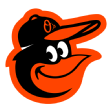 Sisco is probably an average everyday catcher in the big leagues, someone who will play for a long time, not make many All-Star teams and get called “workmanlike” or maybe “gritty” a bunch. That’s what I might have said in June, but then we saw him hit that opposite-field homer at the Futures Game -- at Petco Park, no less -- so maybe there’s another gear of pop in those wrists that he hasn’t shown much in his brief career.
Sisco is probably an average everyday catcher in the big leagues, someone who will play for a long time, not make many All-Star teams and get called “workmanlike” or maybe “gritty” a bunch. That’s what I might have said in June, but then we saw him hit that opposite-field homer at the Futures Game -- at Petco Park, no less -- so maybe there’s another gear of pop in those wrists that he hasn’t shown much in his brief career.
Sisco hit .320/.406/.422 in Double-A in 2016 as a 21-year-old, so the numbers match the scouting reports that he can hit, and his walk rate was the best of his career as well. Behind the plate, he’s at least an average receiver, he has improved his game-calling (according to Orioles people), and despite a fringy arm, he should at least be average against base stealers.
If Sisco never hits 10 homers in a season, he’s still a very good, valuable big leaguer, probably a 3 WAR catcher for a long time because he makes a lot of hard contact and will at least never hurt you on defense. And maybe that one day in San Diego tipped us off that he’s going to be something more.
 68. Kyle Lewis, OF, Seattle Mariners
68. Kyle Lewis, OF, Seattle Mariners
Age: 21 (7/13/95) | B/T: R/R
Height: 6-4 | Weight: 210
Top level: Short-season A-ball | 2016: NE
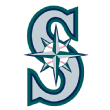 Lewis was a potential No. 1 overall pick last June, very much in the Phillies’ mix in the spring, but he ended up going 11th overall to Seattle. The Mariners had to be overjoyed to get a player who seemed to have no chance to reach their pick.
Lewis was a potential No. 1 overall pick last June, very much in the Phillies’ mix in the spring, but he ended up going 11th overall to Seattle. The Mariners had to be overjoyed to get a player who seemed to have no chance to reach their pick.
Lewis won the Golden Spikes Award while playing at Mercer in the smaller Southern Conference, so he hit well but against mediocre pitching. His power is ahead of his hit tool right now, with a big leg kick and a lot of extra movement that can get him over-rotating and even collapsing his back side. He’s a 40 runner, 45 if you love him, a center fielder in the past but maybe 60/40 to move to right even on draft day … until he tore an ACL in July, which might shift those odds to 80/20, depending how well his knee bounces back from the injury and resulting surgery.
The injury was a colossal shame, as Lewis needed the at-bats he’ll miss and might simply have to go to a corner if he loses any speed. The bat should still play in right, with 30-homer potential if he hits enough to get to it, but the opportunity for him to become a star depended a lot on his staying in the middle of the field.
 67. Trent Clark, OF, Milwaukee Brewers
67. Trent Clark, OF, Milwaukee Brewers
Age: 20 (11/1/96) | B/T: L/L
Height: 6-0 | Weight: 205
Top level: Low-A | 2016: 70
 The 15th overall pick in the 2015 draft, Clark had a disappointing, injury-riddled, full-season debut in 2016, as he played in just 59 games around a serious hamstring problem and never got consistent at-bats or a rhythm going at the plate. Clark is an unusually disciplined hitter for his age, working the count well and going the other way with authority, but he perhaps takes a few too many hitter’s pitches early in counts.
The 15th overall pick in the 2015 draft, Clark had a disappointing, injury-riddled, full-season debut in 2016, as he played in just 59 games around a serious hamstring problem and never got consistent at-bats or a rhythm going at the plate. Clark is an unusually disciplined hitter for his age, working the count well and going the other way with authority, but he perhaps takes a few too many hitter’s pitches early in counts.
When he’s right, Clark is a threat to hit for high averages with doubles power to all fields, probably peaking in the 10-15 homer range, though his power was gone when he couldn’t use his legs last season. He never ran well all year -- he was caught 10 times in 15 stolen base attempts, at which point the first-base coach should just tackle you if you so much as think about running -- but that’s probably the effects of the hamstring injury too. It’s kind of a mulligan for Clark; he needs a full season of at-bats to reestablish himself as a legitimate offensive threat.
 66. Franklin Perez, RHP, Houston Astros
66. Franklin Perez, RHP, Houston Astros
Age: 19 (12/6/97) | B/T: R/R
Height: 6-4 | Weight: 210
Top level: Low-A | 2016: NR
 Signed out of Venezuela in 2013 for $1 million, Perez had thrown only 15 innings in the U.S. before 2016. He comes from a family of athletes, including his mom, a former collegiate volleyball player. The Astros sent him to Quad Cities in mid-May, and he pitched as well as any starter in the league, despite being its youngest pitcher at just 18 years old. Perez doesn’t look that young, with a 6-foot-4, 210-pound body, and he’s very athletic for his size, pitching at an easy 92-94 mph and showing up to 96 at times.
Signed out of Venezuela in 2013 for $1 million, Perez had thrown only 15 innings in the U.S. before 2016. He comes from a family of athletes, including his mom, a former collegiate volleyball player. The Astros sent him to Quad Cities in mid-May, and he pitched as well as any starter in the league, despite being its youngest pitcher at just 18 years old. Perez doesn’t look that young, with a 6-foot-4, 210-pound body, and he’s very athletic for his size, pitching at an easy 92-94 mph and showing up to 96 at times.
He works with four pitches now, with an above-average curveball and average changeup, and there’s nothing specific that would say he isn't a starter other than his youth and the need to keep him healthy as his arm matures. The Astros did baby him last year -- he had at least six days between all of his starts -- but I imagine this year we’ll see just how good Perez is over a longer period. He offers a good No. 3 starter package now, with his ability to become more than that a function of how well his secondary pitches evolve.
 65. Fernando Romero, RHP, Minnesota Twins
65. Fernando Romero, RHP, Minnesota Twins
Age: 22 (12/24/94) | B/T: R/R
Height: 6-0 | Weight: 215
Top level: High-A | 2016: NR
 Romero missed 2015 after Tommy John surgery and was supposed to ease back into things last season, but he pitched so well that the Twins bumped him up to high-A and let him continue to work through the end of August, giving him extra rest between starts (he never went with fewer than five days off) and keeping his pitch counts under 100.
Romero missed 2015 after Tommy John surgery and was supposed to ease back into things last season, but he pitched so well that the Twins bumped him up to high-A and let him continue to work through the end of August, giving him extra rest between starts (he never went with fewer than five days off) and keeping his pitch counts under 100.
He’s built like a workhorse starter, though there’s some reliever risk to the delivery, but it’s definitely starter stuff. He’ll pitch at 95-98 mph, retaining his velocity deep into games, which he supports with a hard slider thrown into the upper 80s that he can throw for strikes and backdoor to left-handed batters, as well as a changeup that should end up at least average. Romero over-rotates in his delivery and lands wide open, which often causes a pitcher to yank pitches to his glove side. Romero hasn’t had that problem yet, but for command’s sake and the health of his elbow, he should be landing online to the plate.
Romero might be consistently up at 97-98 mph with a slider that reaches 90 if he ends up in the bullpen. But the Twins haven’t had power starter prospects in their system for a while now, and they have to see how Romero handles a full season in a rotation in 2017. He might have the best shot of any of their guys to become a true No. 1 or No. 2.
 64. Ariel Jurado, RHP, Texas Rangers
64. Ariel Jurado, RHP, Texas Rangers
Age: 21 (1/30/96) | B/T: R/R
Height: 6-1 | Weight: 180
Top level: Double-A | 2016: NR
 The Panamanian Jurado first popped up in 2015 with a strong 99-inning season for low-A Hickory at the age of 19, but in 2016, he really broke out by performing in the pitcher’s hell of High Desert and earning a late-season promotion to Double-A. Jurado has plus command right now of his two-seamer and good feel for an above-average changeup. His breaking ball, which varies between a slider and curveball, is the one weakness in his repertoire.
The Panamanian Jurado first popped up in 2015 with a strong 99-inning season for low-A Hickory at the age of 19, but in 2016, he really broke out by performing in the pitcher’s hell of High Desert and earning a late-season promotion to Double-A. Jurado has plus command right now of his two-seamer and good feel for an above-average changeup. His breaking ball, which varies between a slider and curveball, is the one weakness in his repertoire.
That two-seamer is his money pitch, a worm-killer that helped him generate a 62 percent ground ball rate last year, and he misses enough bats between that and the changeup to get by. He was very advanced for 20, in command and feel, so the lack of physical projection isn’t a major concern -- at least not as much as the lack of a defined breaking ball. He can become a fourth starter as it stands, but he could be a lot more if he develops that third pitch -- a slider or maybe a cutter -- to fill out his arsenal.
 63. Ian Happ, 2B/OF, Chicago Cubs
63. Ian Happ, 2B/OF, Chicago Cubs
Age: 22 (8/12/94) | B/T: B/R
Height: 6-0 | Weight: 205
Top level: Double-A | 2016: 47
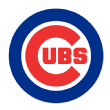 Andrew Benintendi went one pick ahead of the Cubs’ first-round selection in 2015, which meant the Cubs ended up with Happ, who might not quite be the best prospect in baseball but is a valuable trade piece for a team with no room at (sic) the infield.
Andrew Benintendi went one pick ahead of the Cubs’ first-round selection in 2015, which meant the Cubs ended up with Happ, who might not quite be the best prospect in baseball but is a valuable trade piece for a team with no room at (sic) the infield.
Happ is a switch-hitter, but his left-handed swing is much better than his right, with a cleaner, more consistent path and better loft in his finish. He might never provide more than fringe-average defense at second base, but Happ can offer positional flexibility, with experience in center, in right and at first or even as a “stand at shortstop for a few innings” option.
With the Cubs’ roster already overflowing with position players, Happ should get all of 2017 to work on improving his contact rate and repeating his right-handed swing. I think he ends up a multi-position guy or everyday second baseman with solid OBPs and 20 homers a year but probably enough strikeouts to keep his average down in the .260-270 range.
 62. Tyler Beede, RHP, San Francisco Giants
62. Tyler Beede, RHP, San Francisco Giants
Age: 24 (5/23/93) | B/T: R/R
Height: 6-3 | Weight: 210
Top level: Double-A | 2016: NR
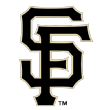 After a very disappointing 2015 season in which Beede tried to throw more sinkers (at the Giants’ suggestion) and seemed to lose his fastball, the former Vanderbilt ace put everything back together for a big bounce-back year that restored his first-round luster and probably put him on track for a 2017 call-up.
After a very disappointing 2015 season in which Beede tried to throw more sinkers (at the Giants’ suggestion) and seemed to lose his fastball, the former Vanderbilt ace put everything back together for a big bounce-back year that restored his first-round luster and probably put him on track for a 2017 call-up.
Beede was back to throwing 92-95 mph on his four-seamer in 2016, with the full repertoire he showed in college, including a curveball that’s now his out pitch. His fastball command is probably still his main weakness (that or the lack of life on his four-seamer), but he was better at pitching in and out than he had been before, and he has added a cutter that might give him a fifth weapon along with the change, curve and both fastballs. Beede’s command still needs work, but his control made a huge leap forward last year, which I think is more a result of his renewed confidence than any physical issue throwing strikes.
He might reach the majors on the quality of his stuff before he’s fully developed as a pitcher, but by his late 20s, I expect him to at least be a solid-average big league starter. There are a lot of ways he could become a No. 2, depending on his command and the development of that new cutter.
 61. Delvin Perez, SS, St. Louis Cardinals
61. Delvin Perez, SS, St. Louis Cardinals
Age: 18 (11/24/98) | B/T: R/R
Height: 6-3 | Weight: 175
Top level: Rookie | 2016: NE
 Perez had a chance to be a top-five pick in the draft before he tested positive for a PED in MLB’s mandated pre-draft screening, which caused him to tumble to the 23rd pick of the first round, where the Cardinals grabbed him. Perez was the youngest premium prospect in the draft, turning only 18 in November, so he’ll play all of 2017 at that age and could conceivably spend part of it in full-season ball, given his strong pro debut (.294/.352/.393 in the GCL with a 16 percent strikeout rate).
Perez had a chance to be a top-five pick in the draft before he tested positive for a PED in MLB’s mandated pre-draft screening, which caused him to tumble to the 23rd pick of the first round, where the Cardinals grabbed him. Perez was the youngest premium prospect in the draft, turning only 18 in November, so he’ll play all of 2017 at that age and could conceivably spend part of it in full-season ball, given his strong pro debut (.294/.352/.393 in the GCL with a 16 percent strikeout rate).
Perez’s power surge last spring might have been a mirage, but his other tools aren’t -- he’s a 70 runner with a 70 arm and at least 60 defense at shortstop, and he does have a quick bat, even if it isn't ultimately going to produce power. Even if he never sees 10 homers in a season -- which I think is pessimistic, given his bat speed -- his glove and speed would at least get him to the majors as a defense-only shortstop … if he’s willing to put in the work, which is the other question that contributed to his slide in the draft. He has a huge opportunity in front of him with a clean slate, and if he wants to be a superstar, he was born with the physical ability to become one.
